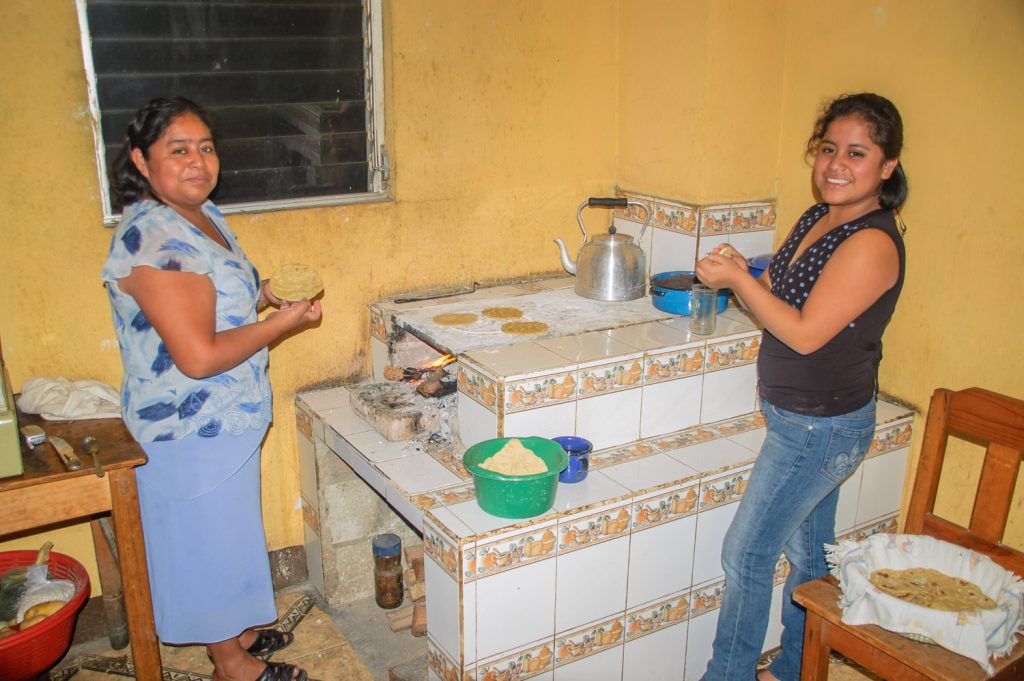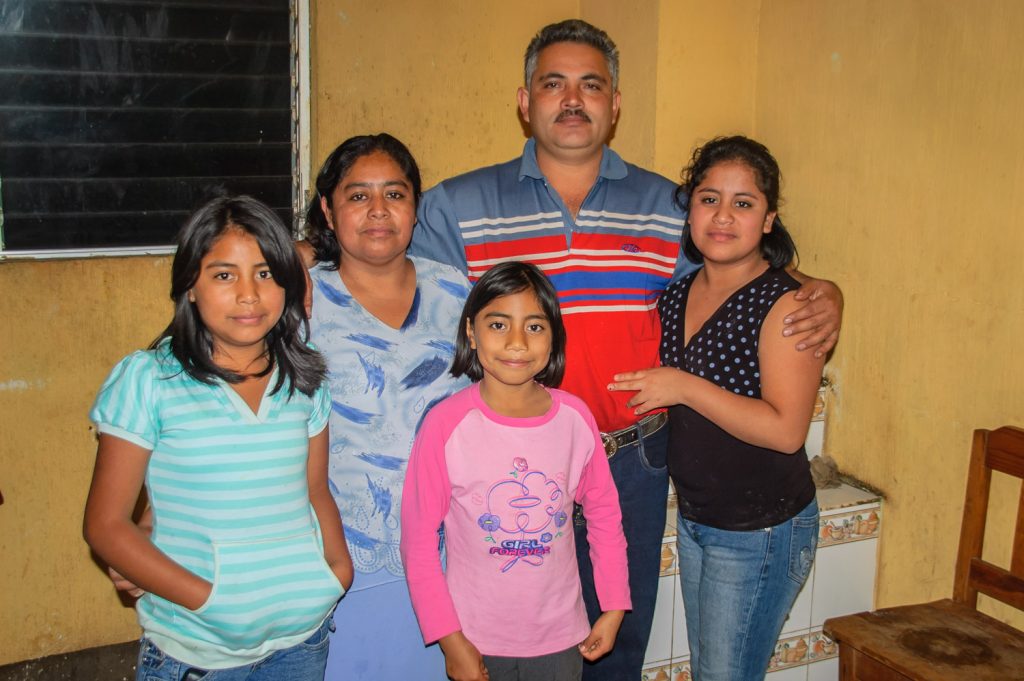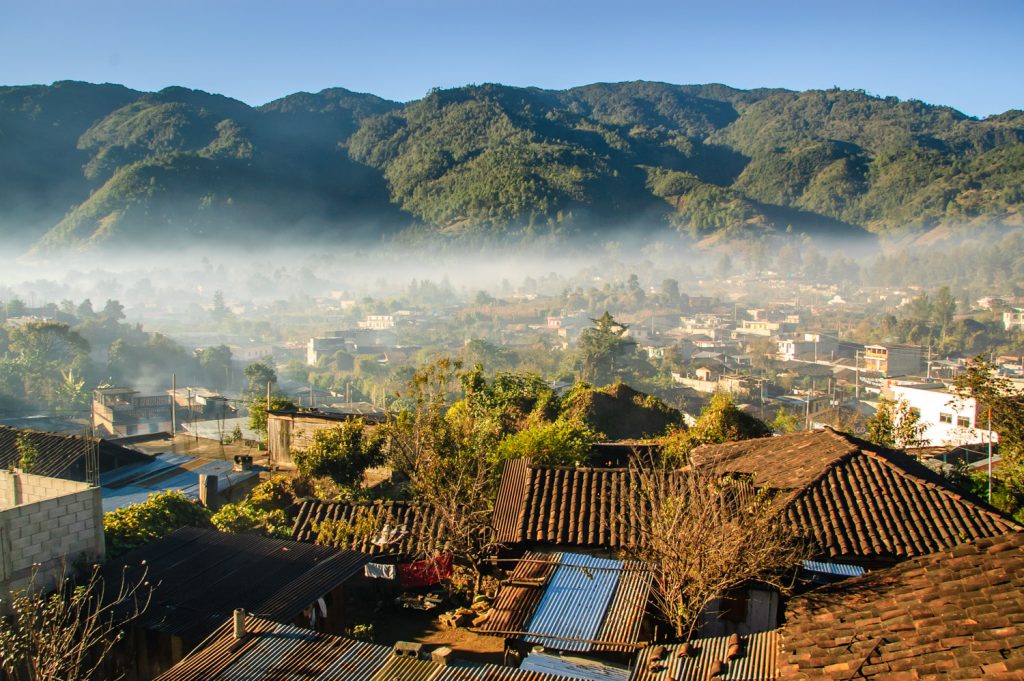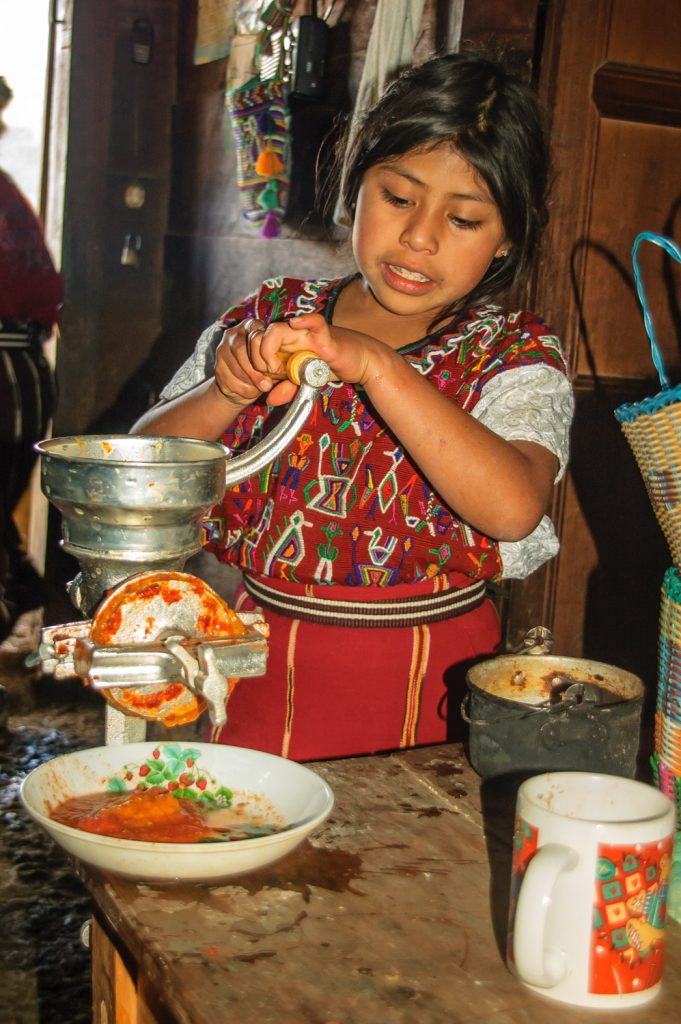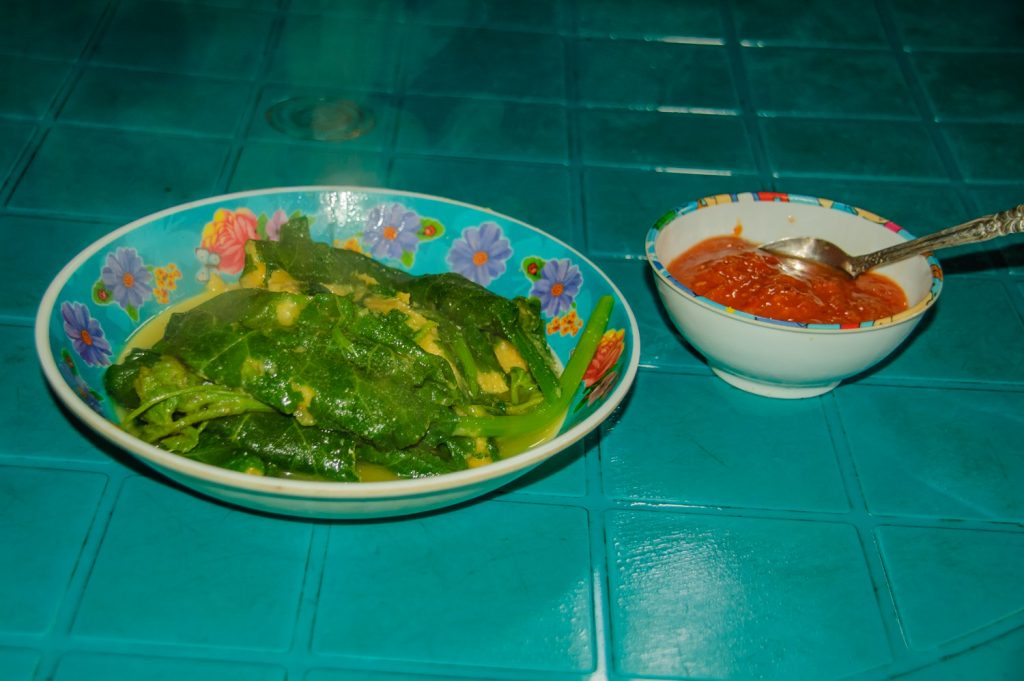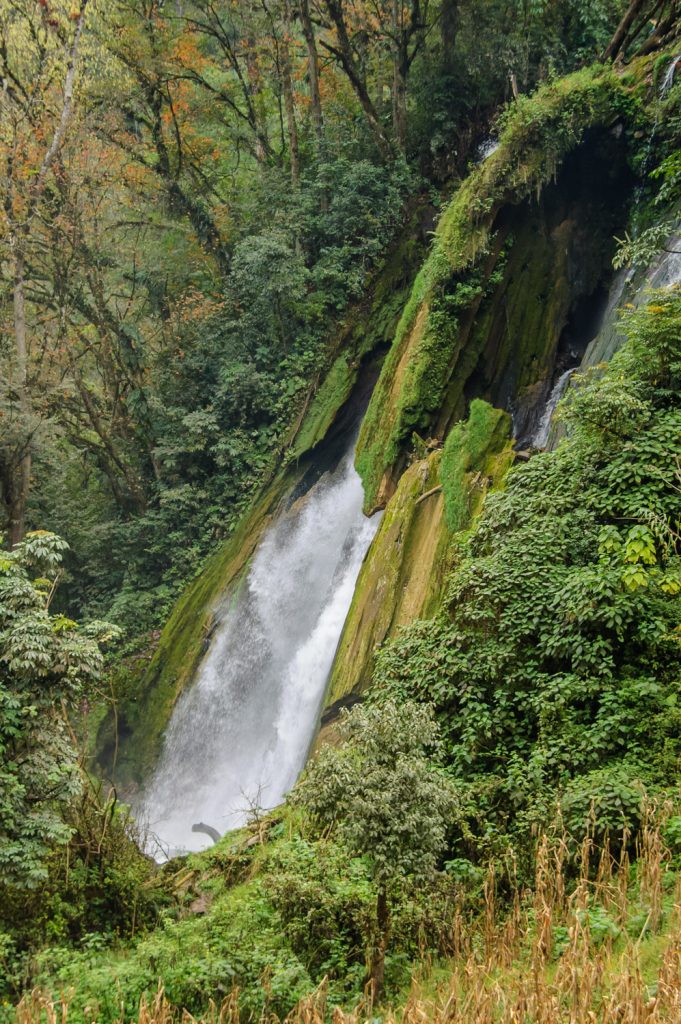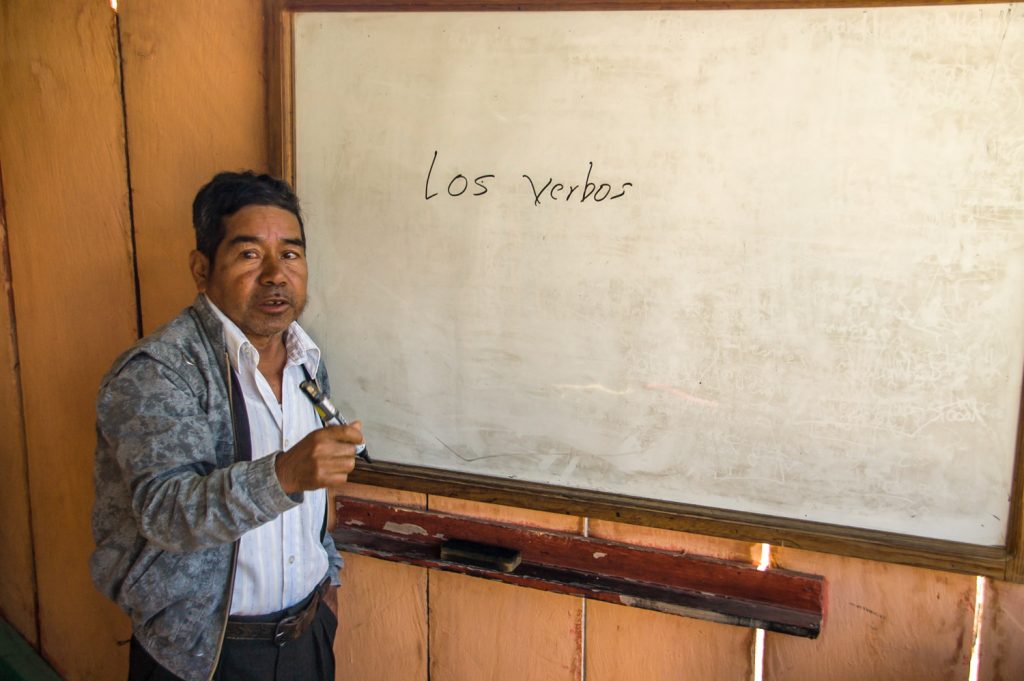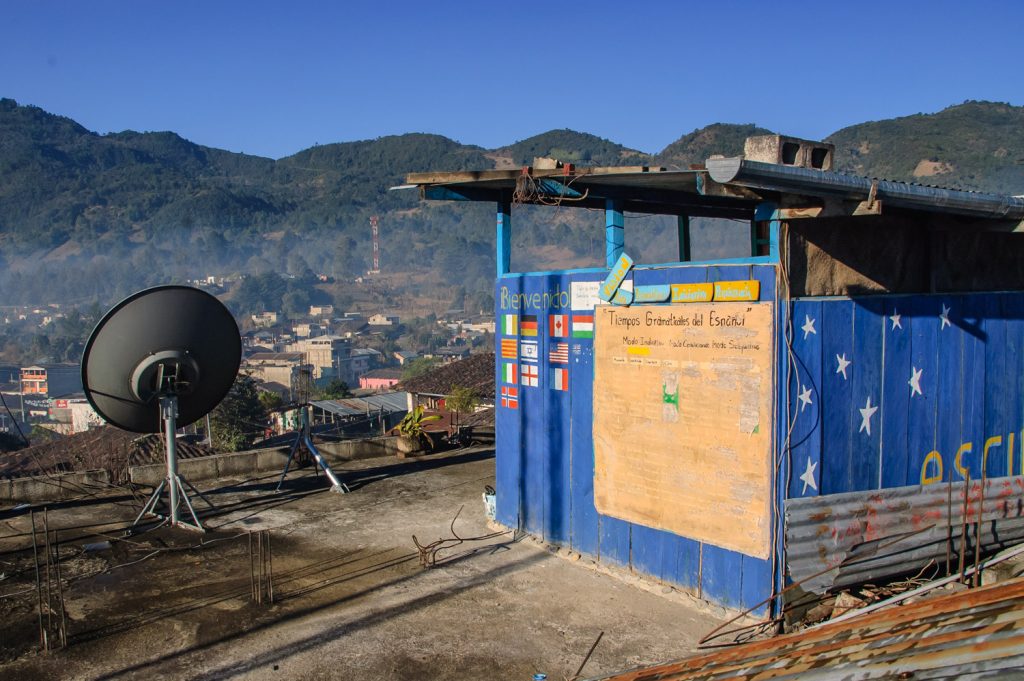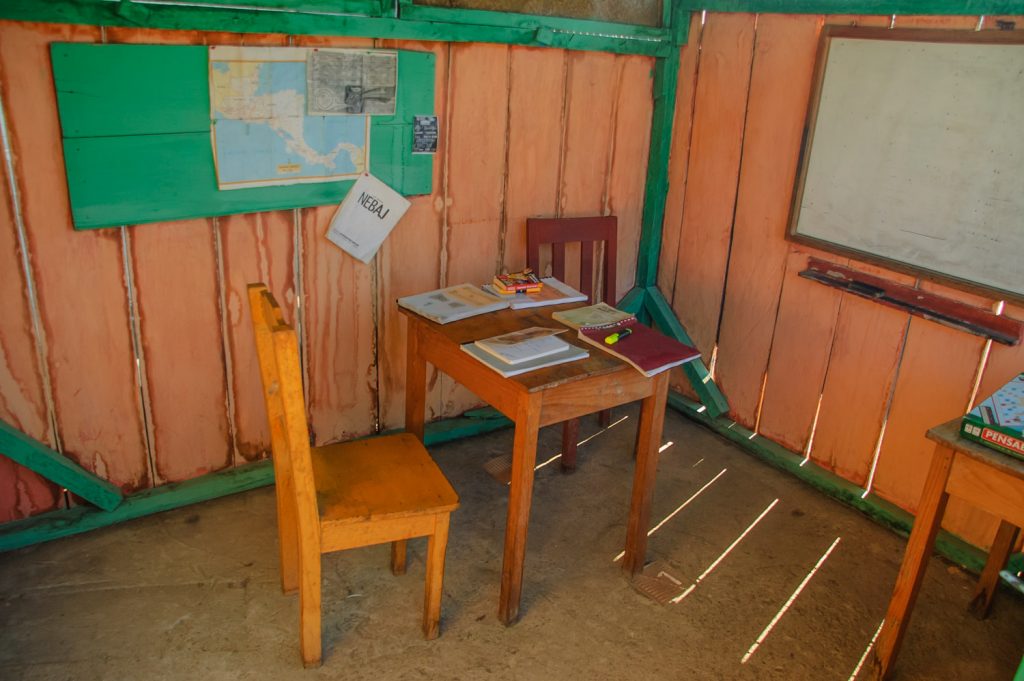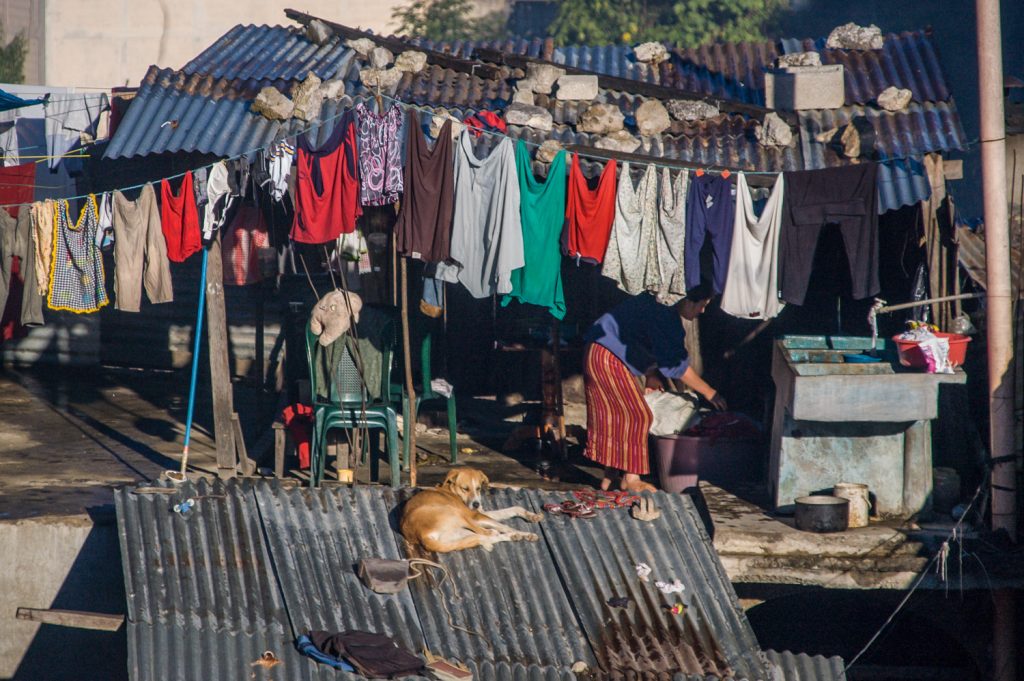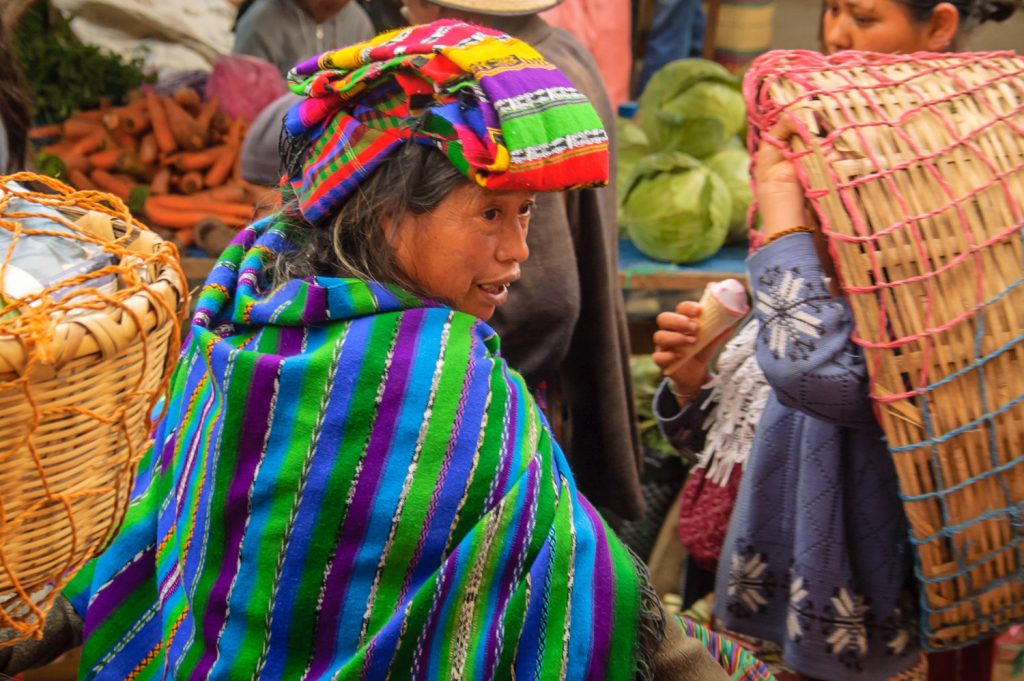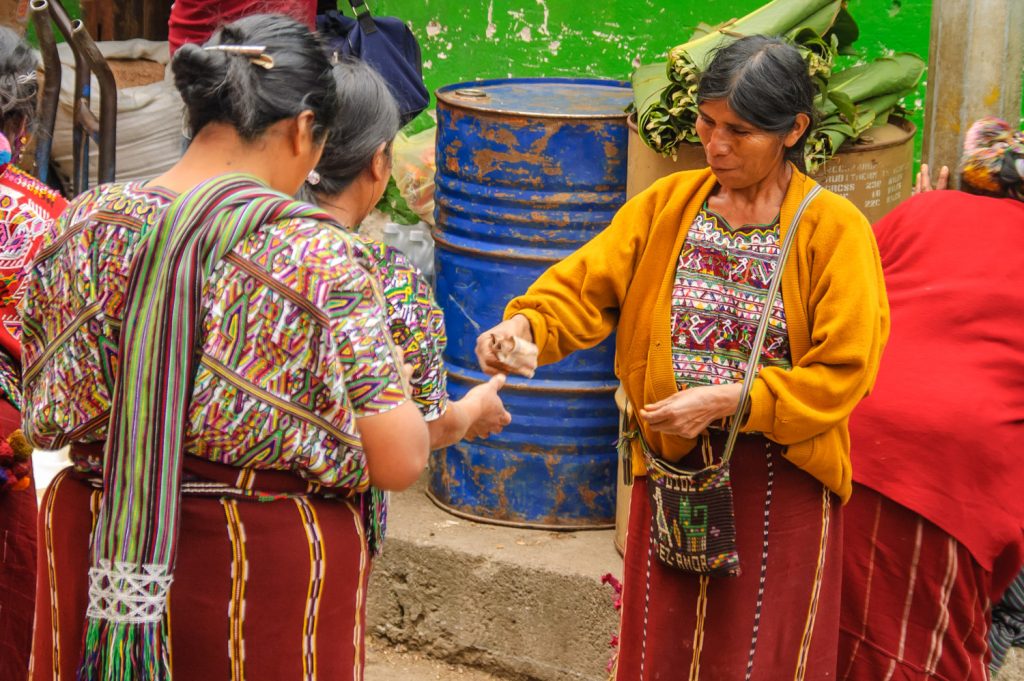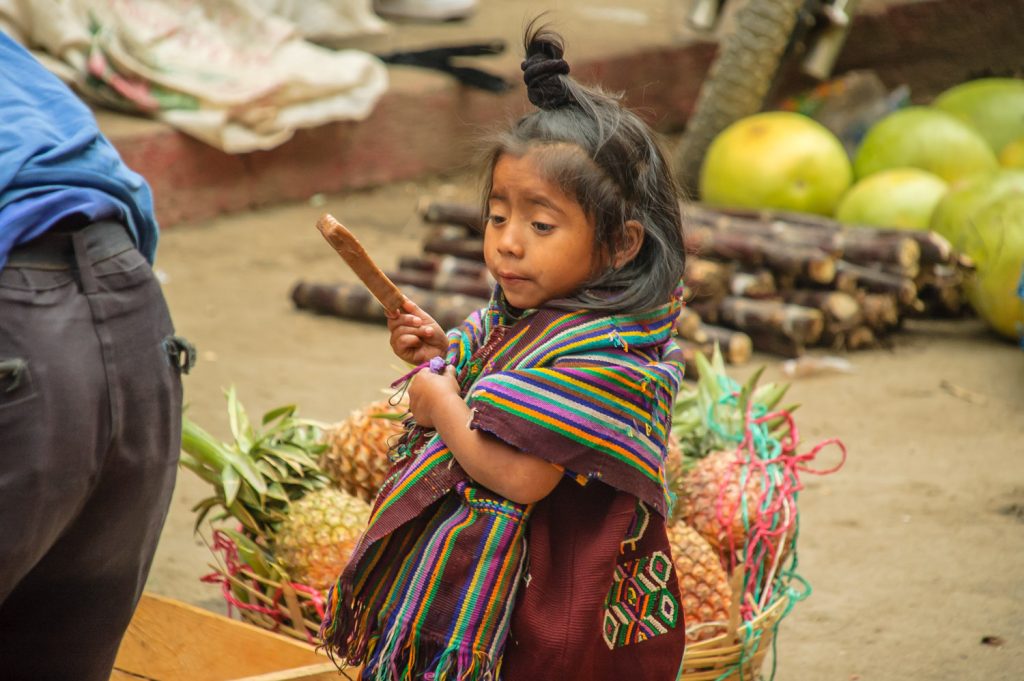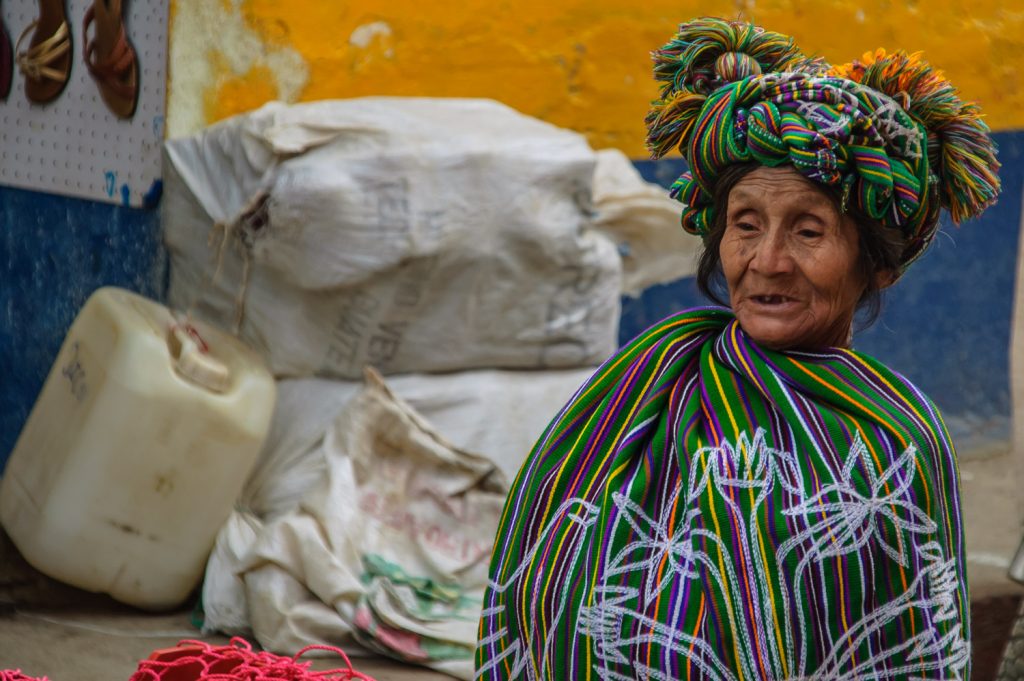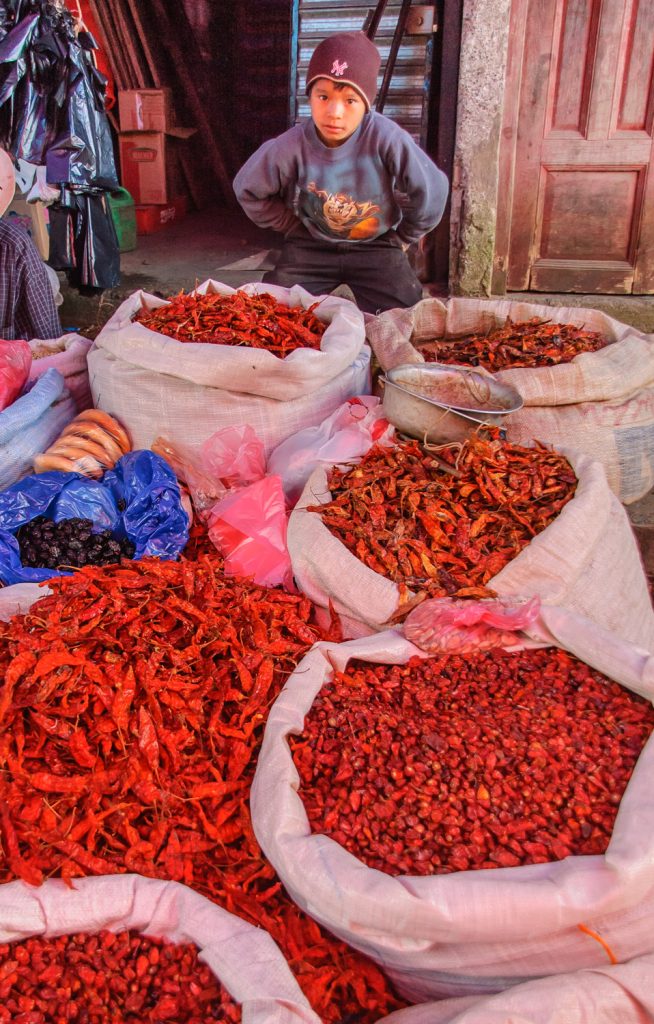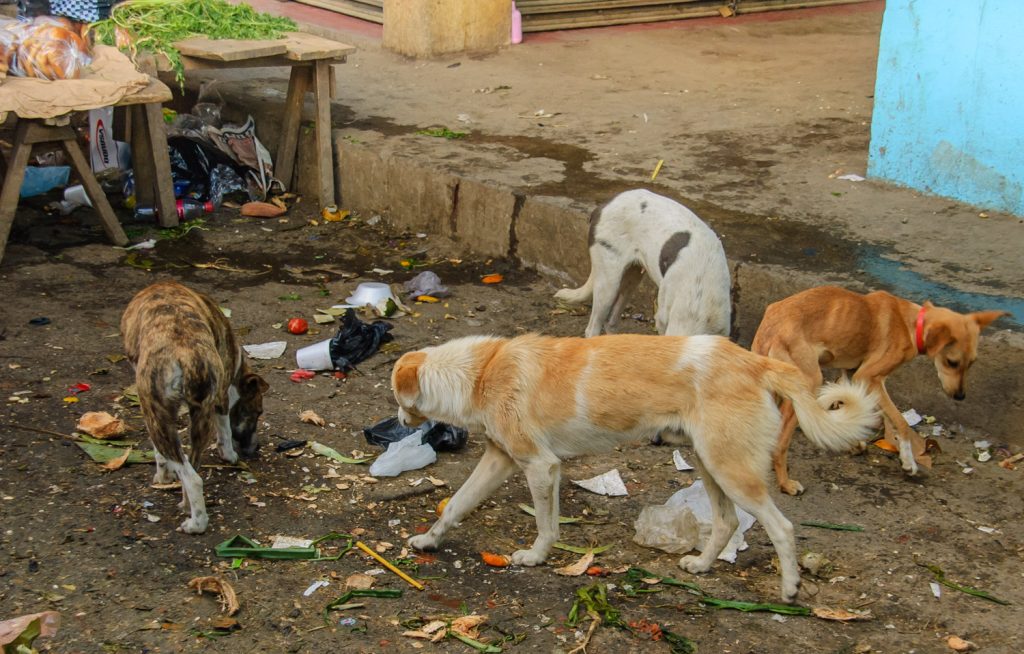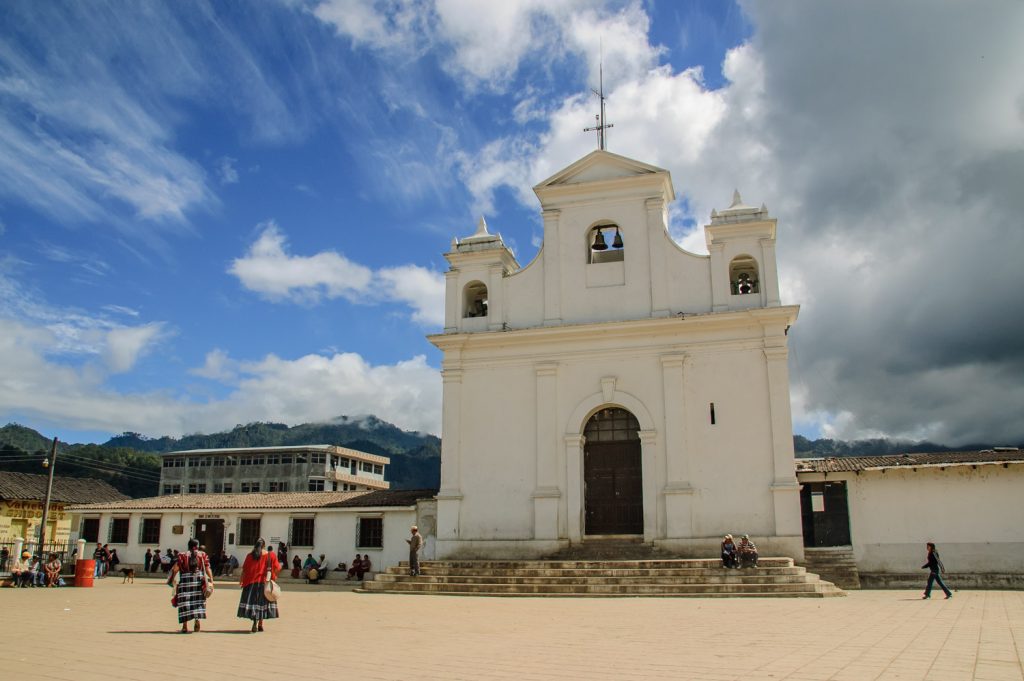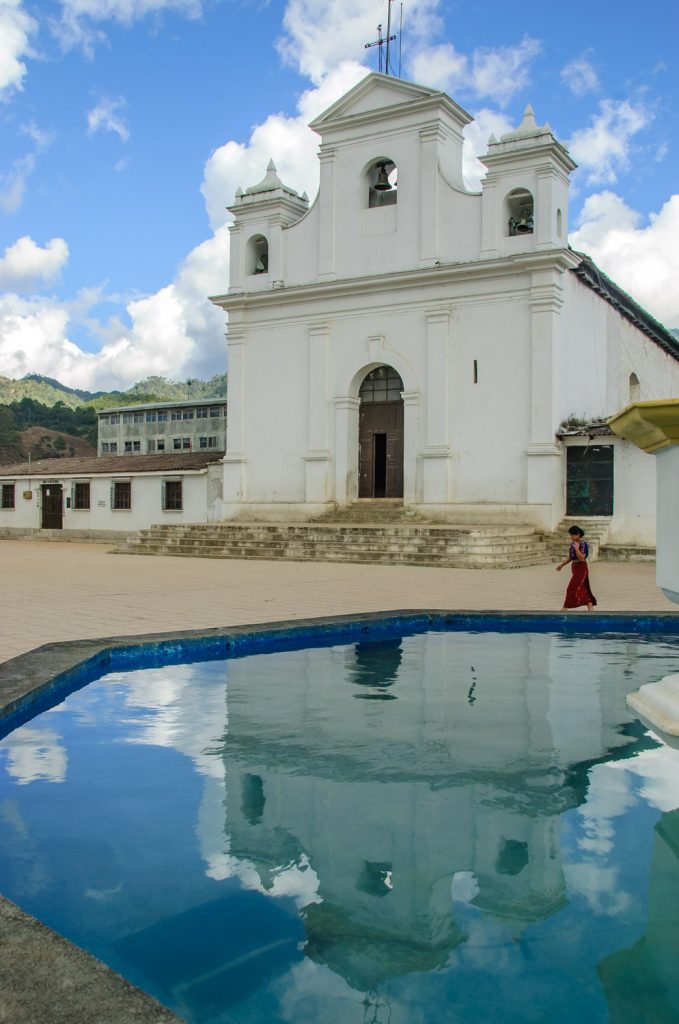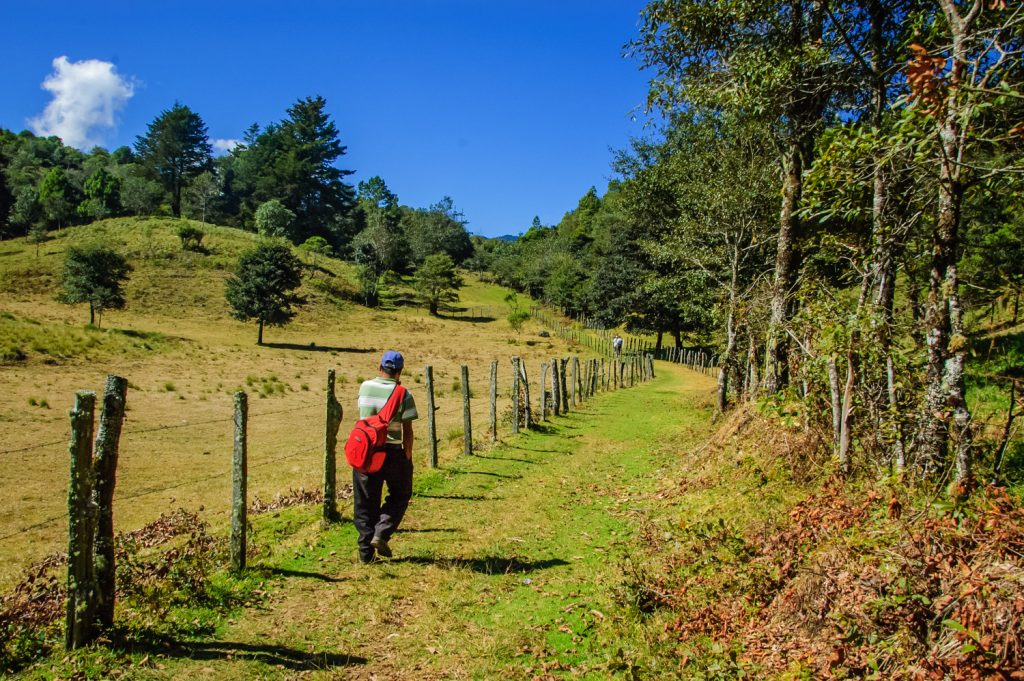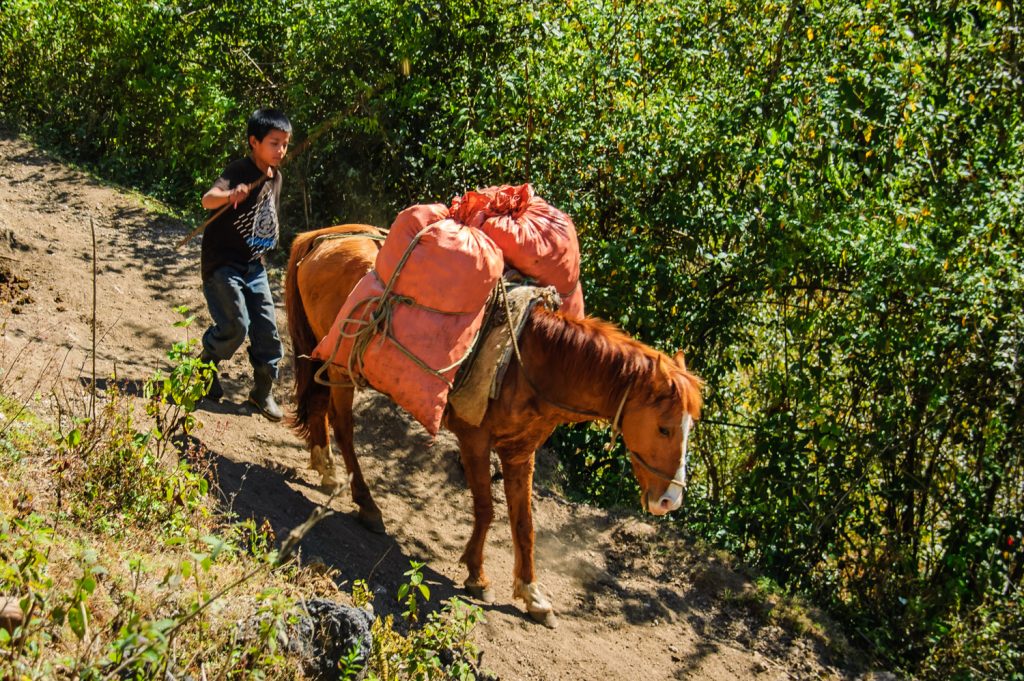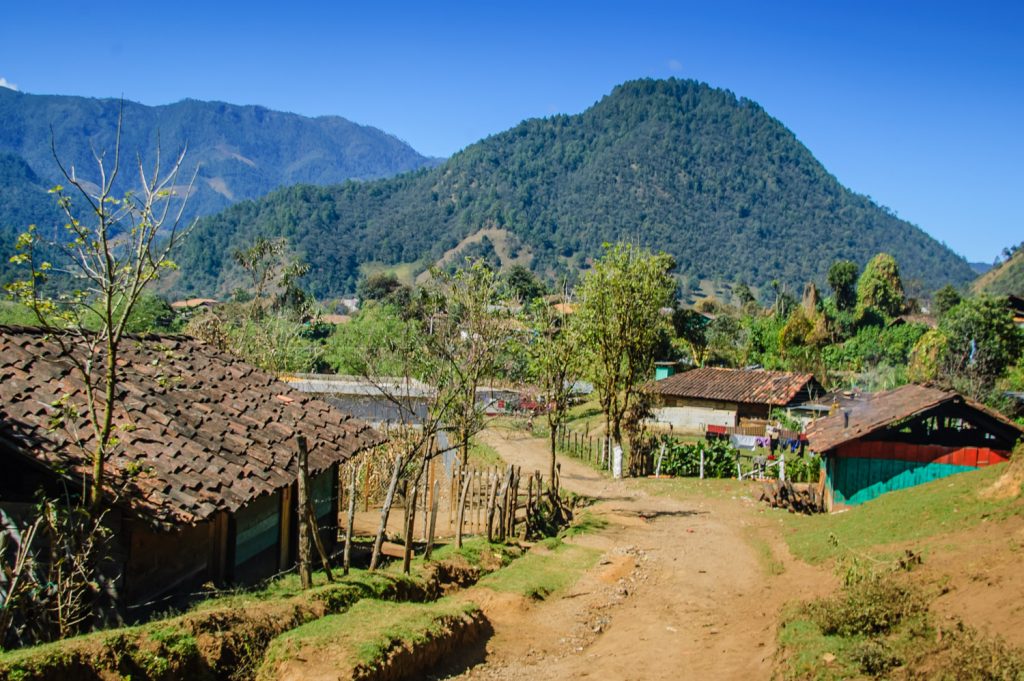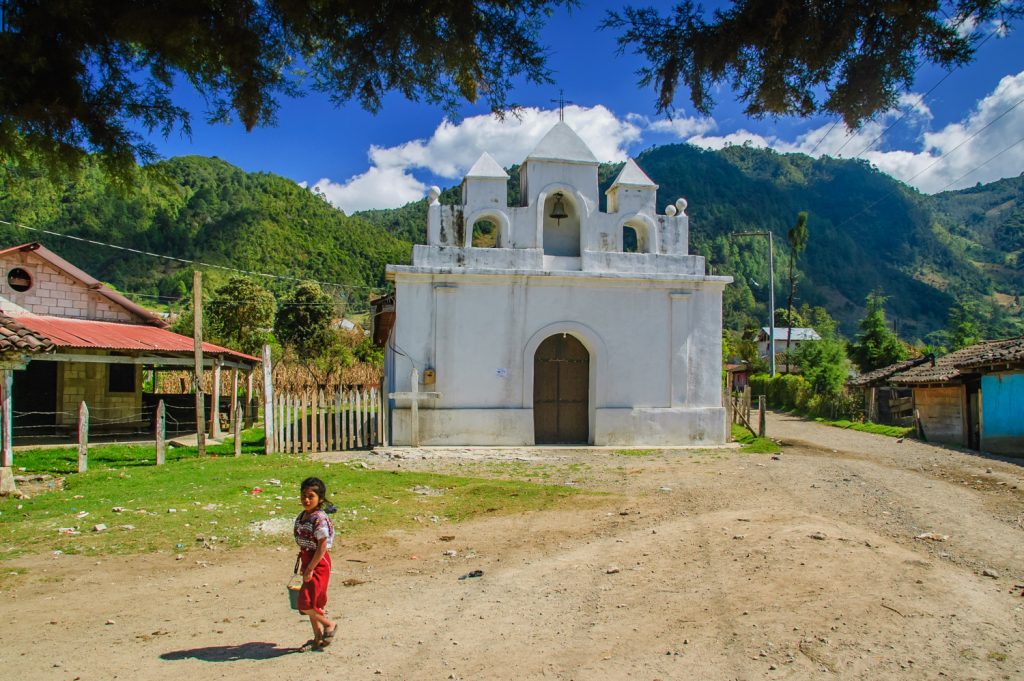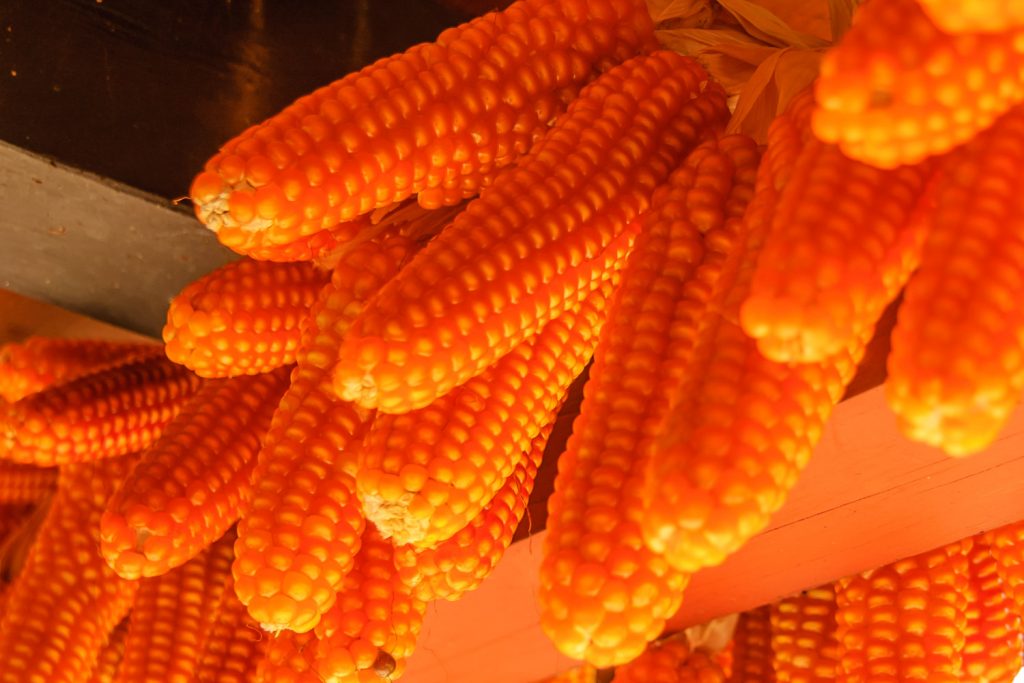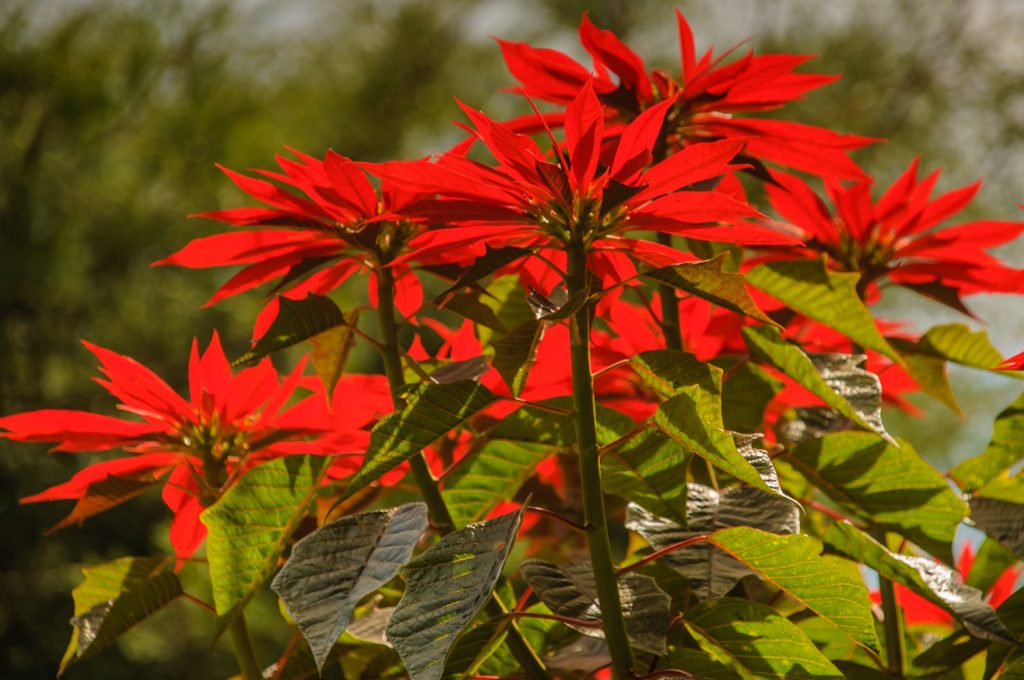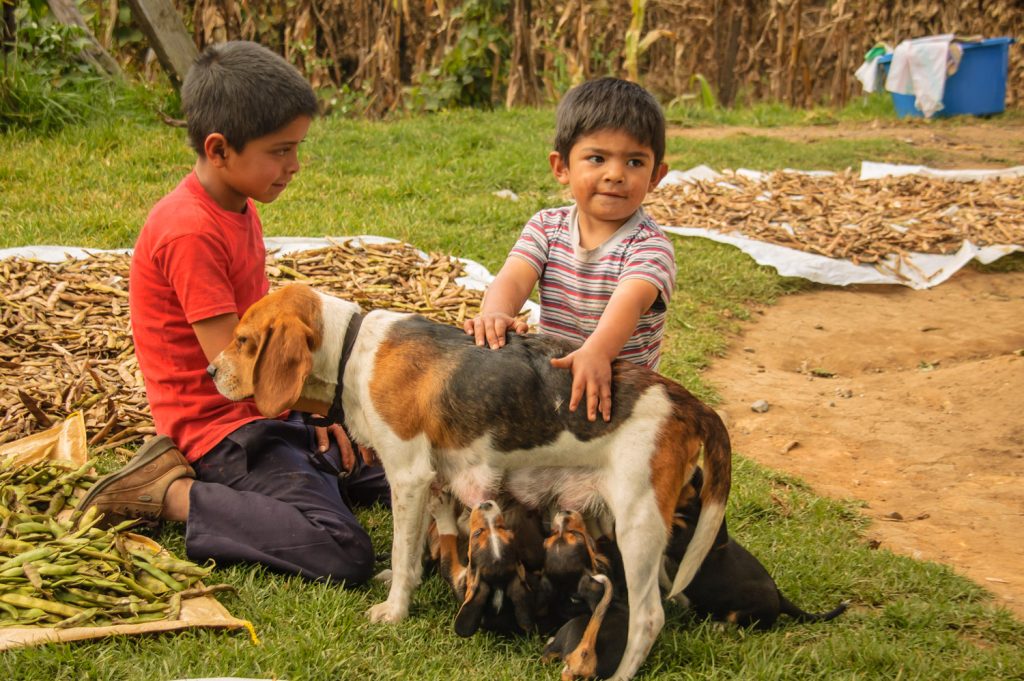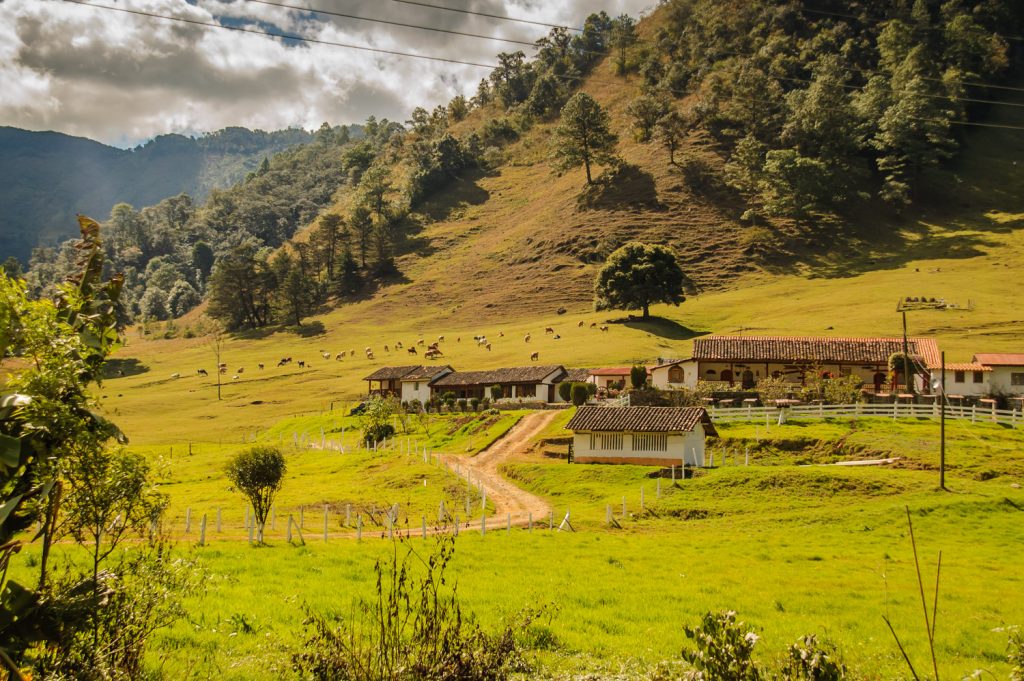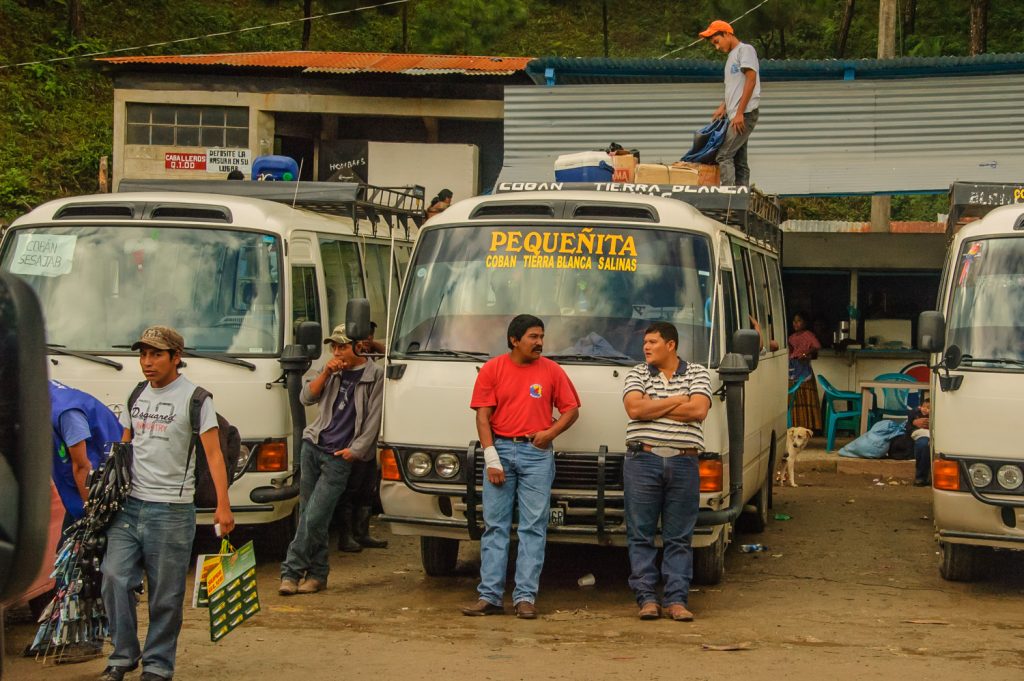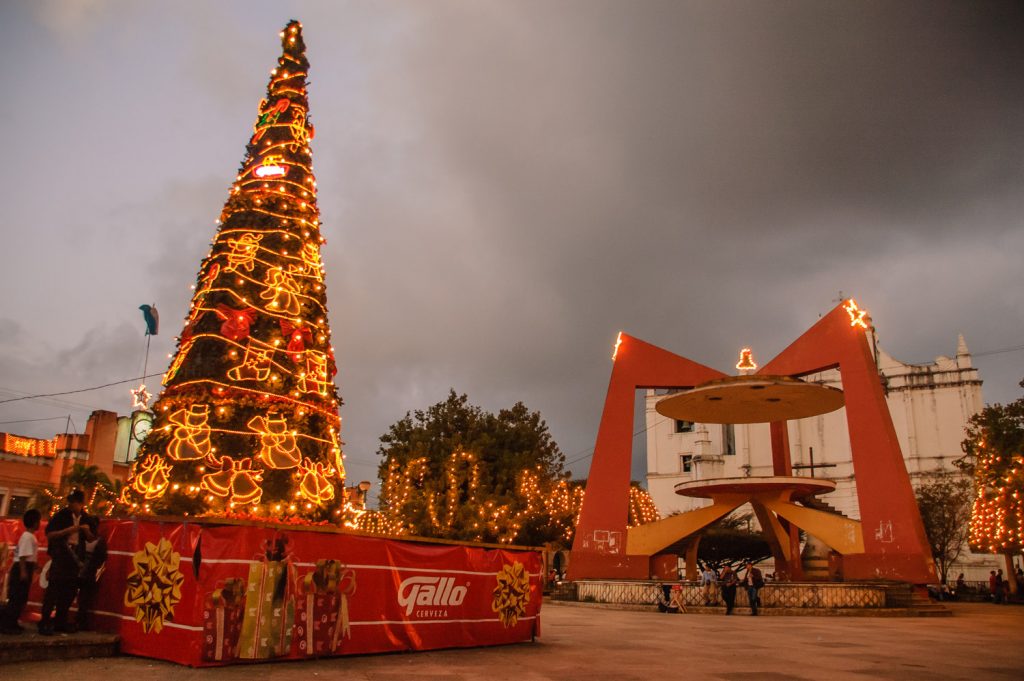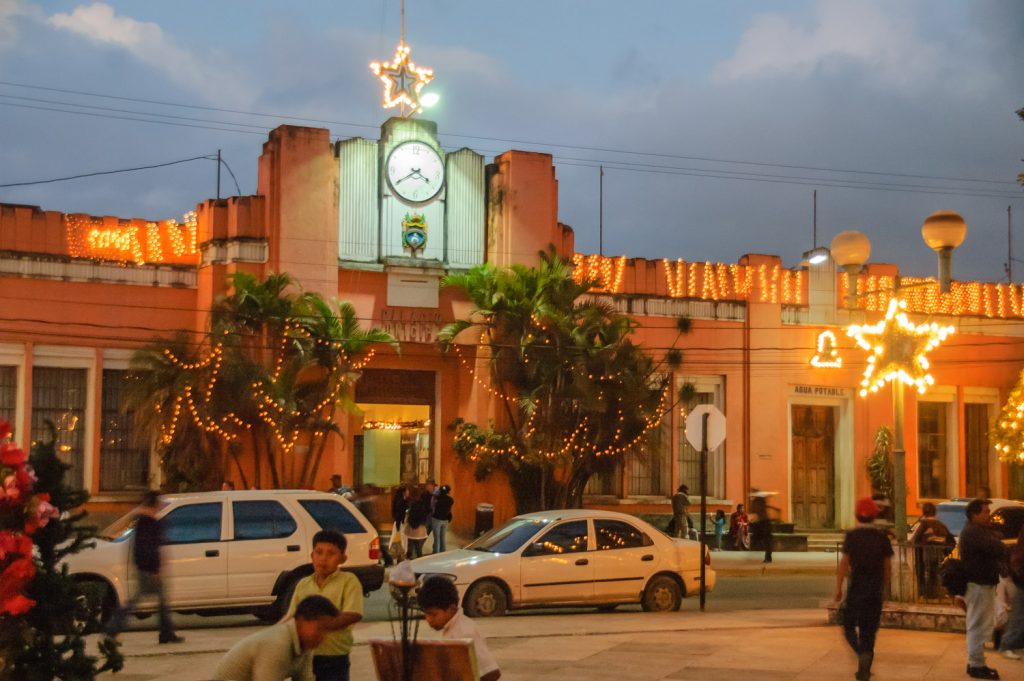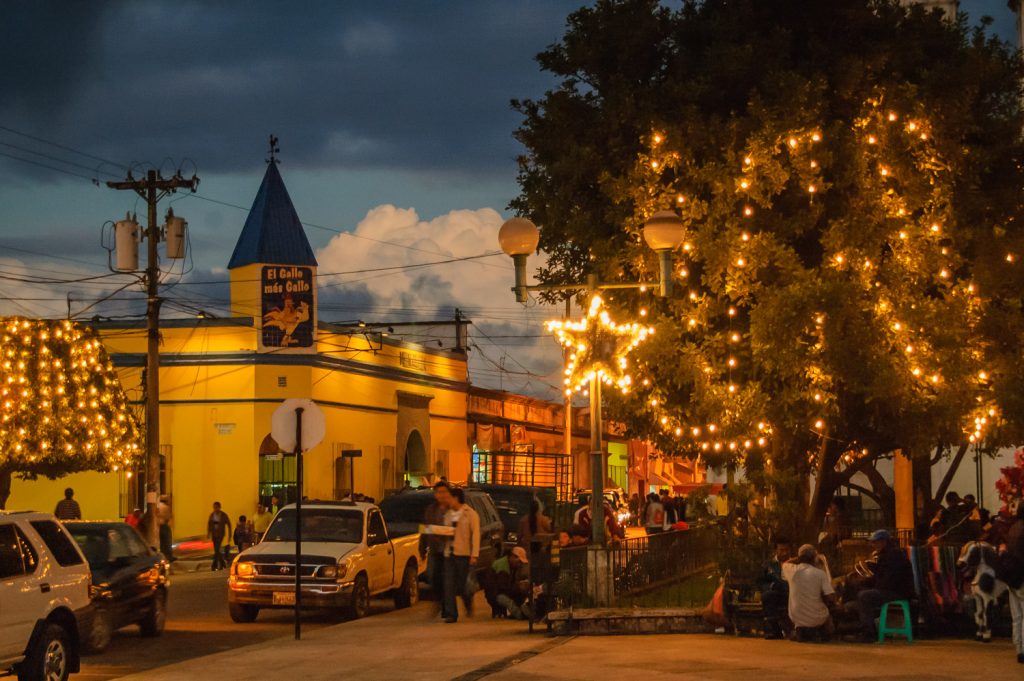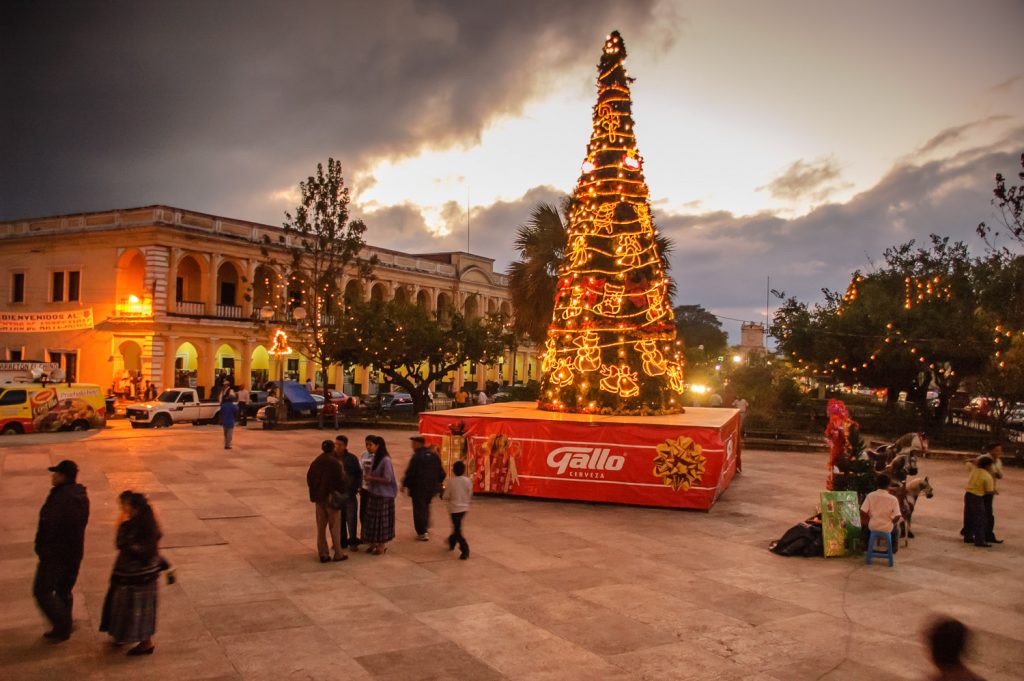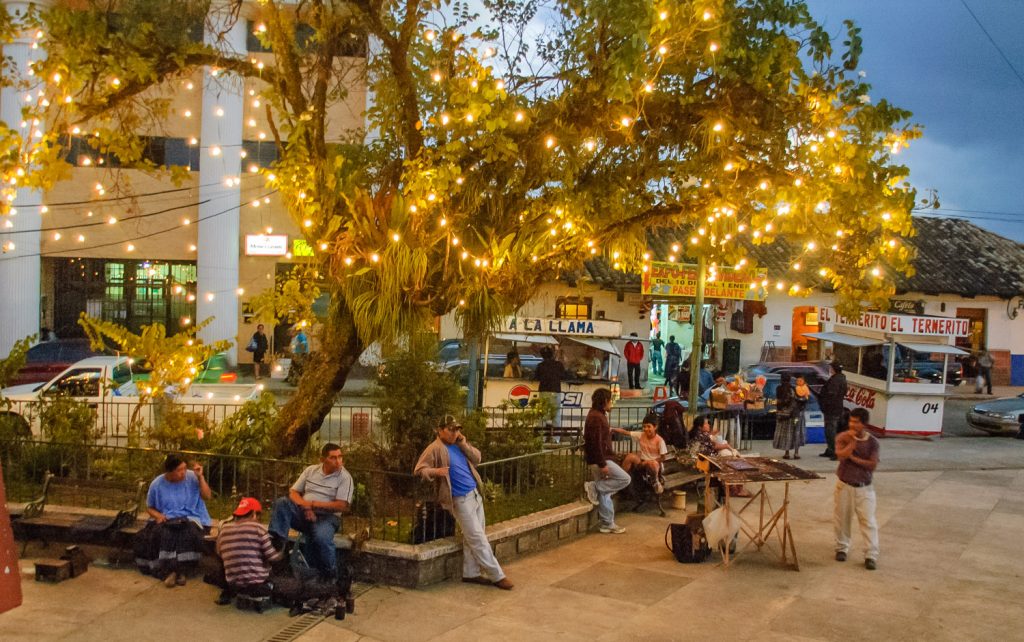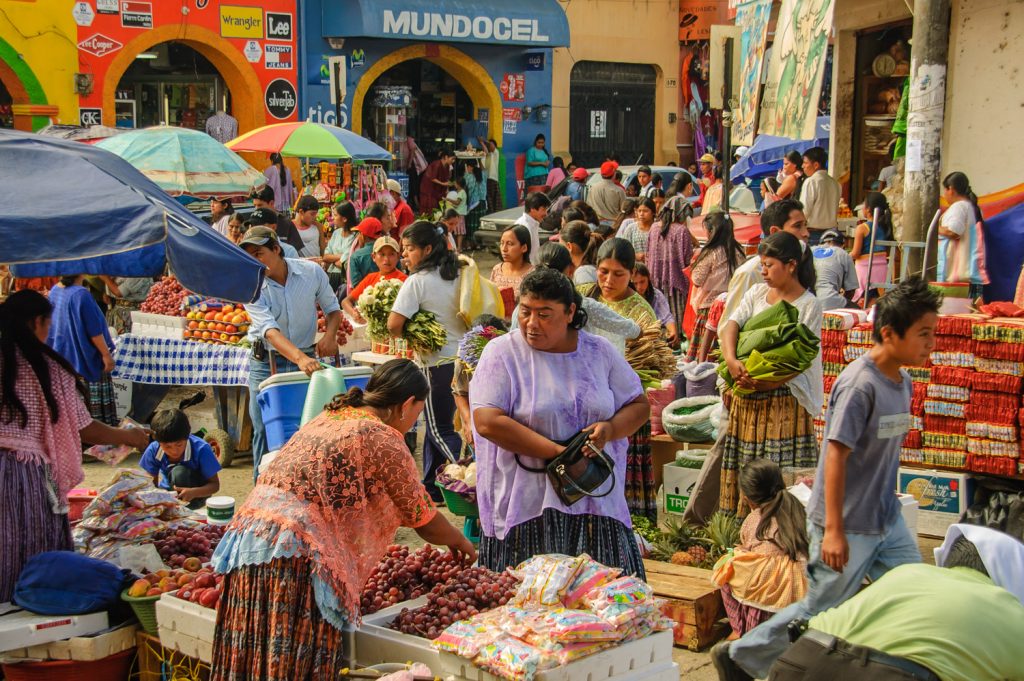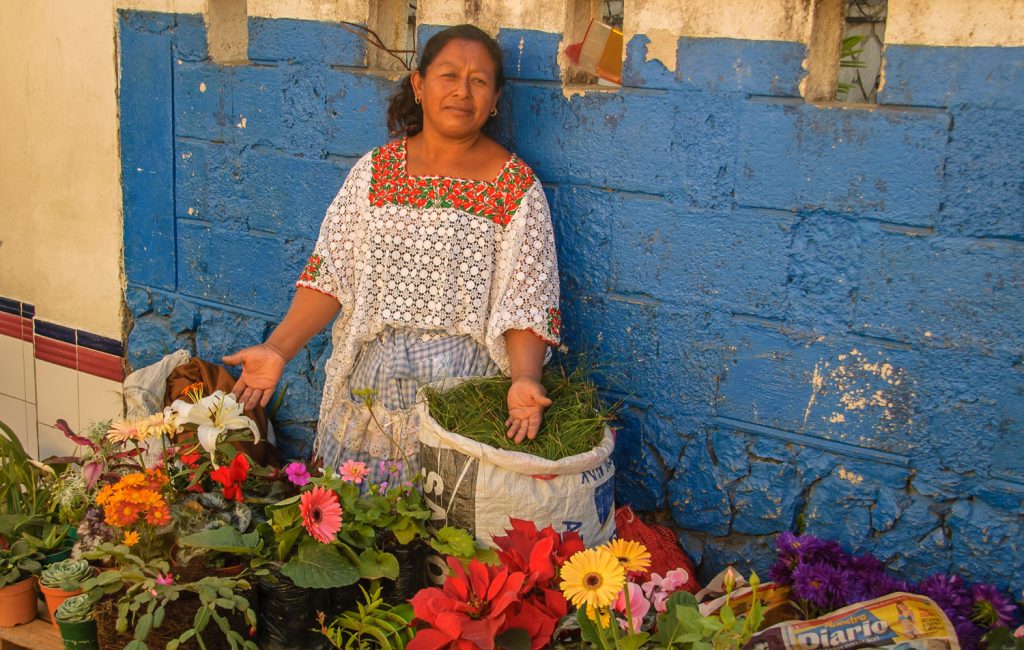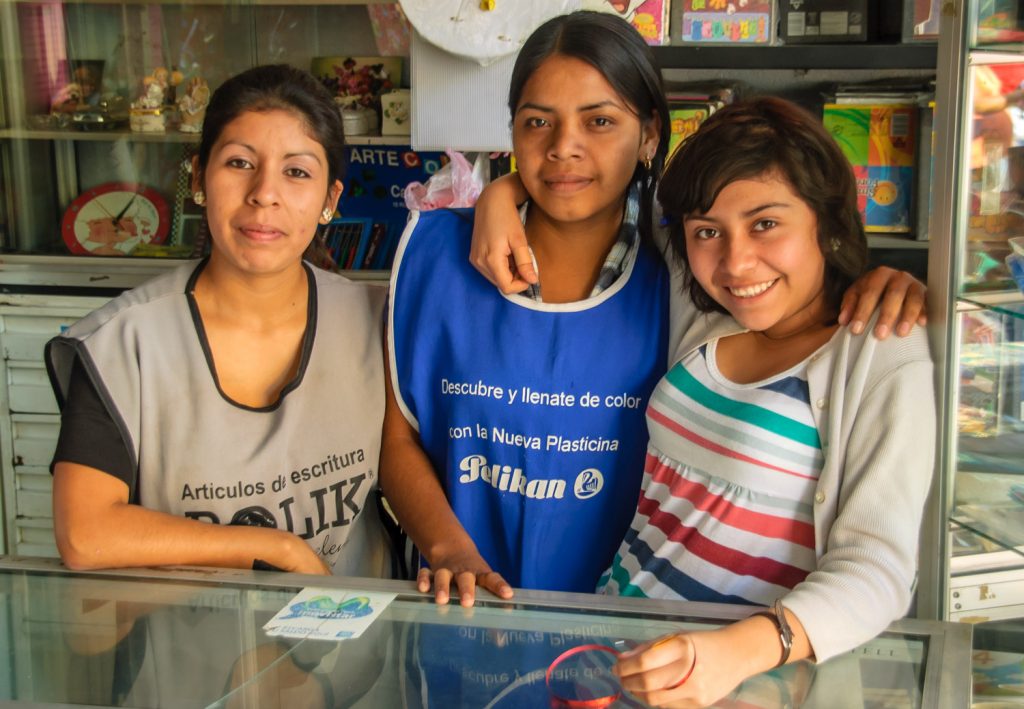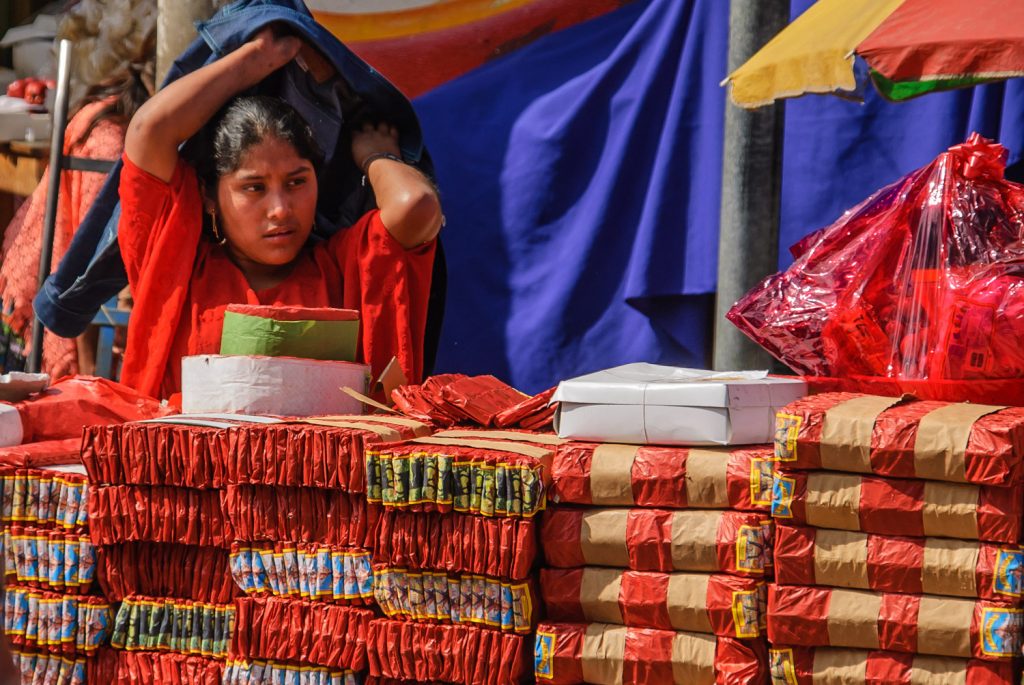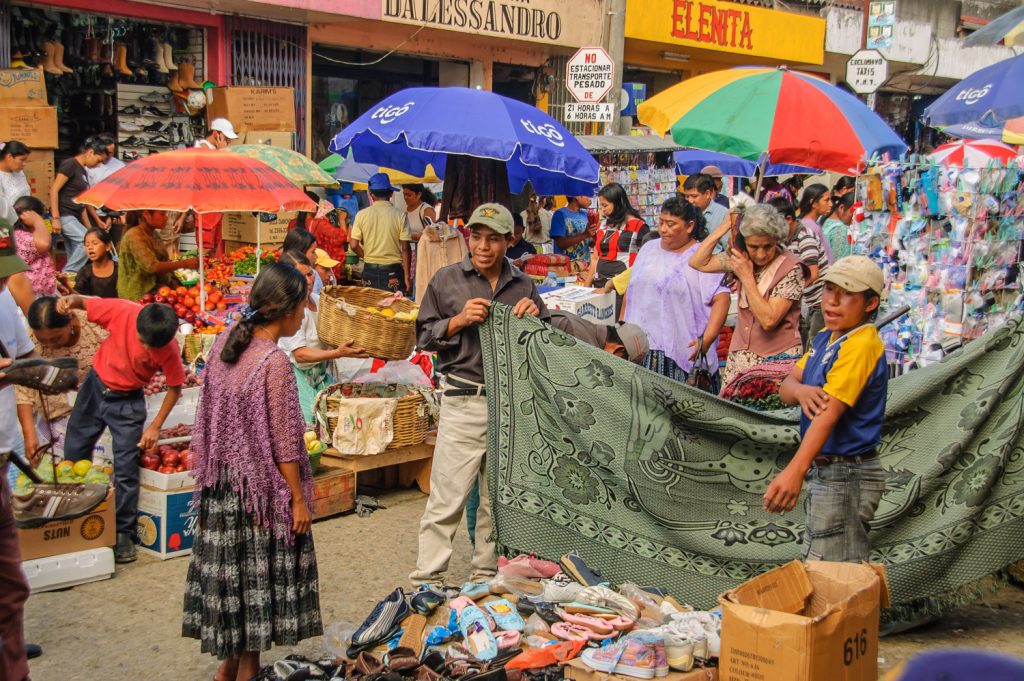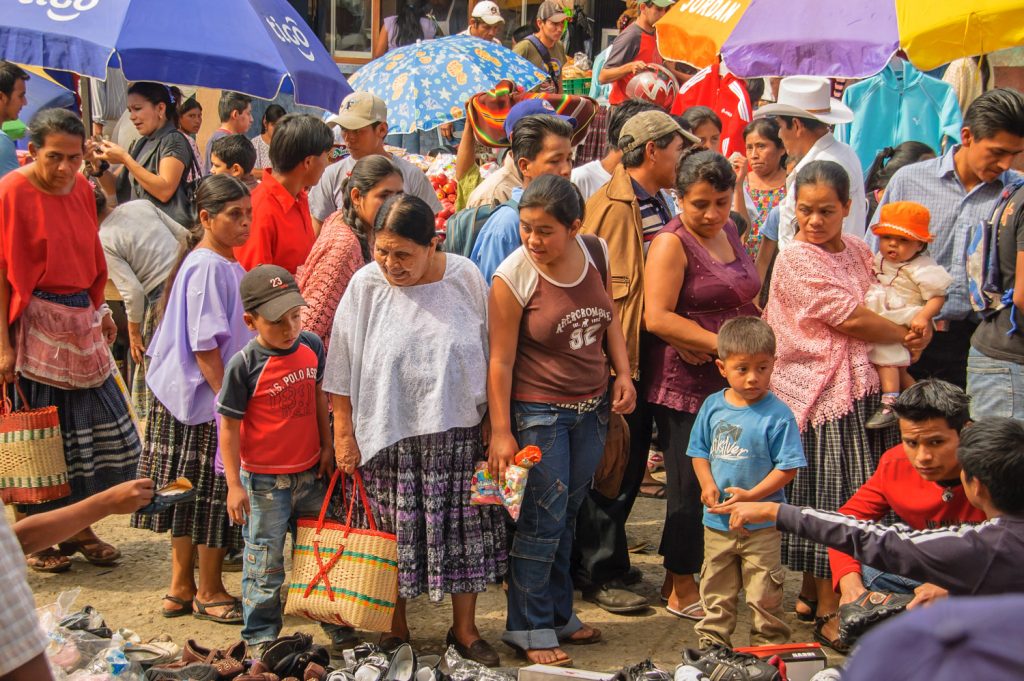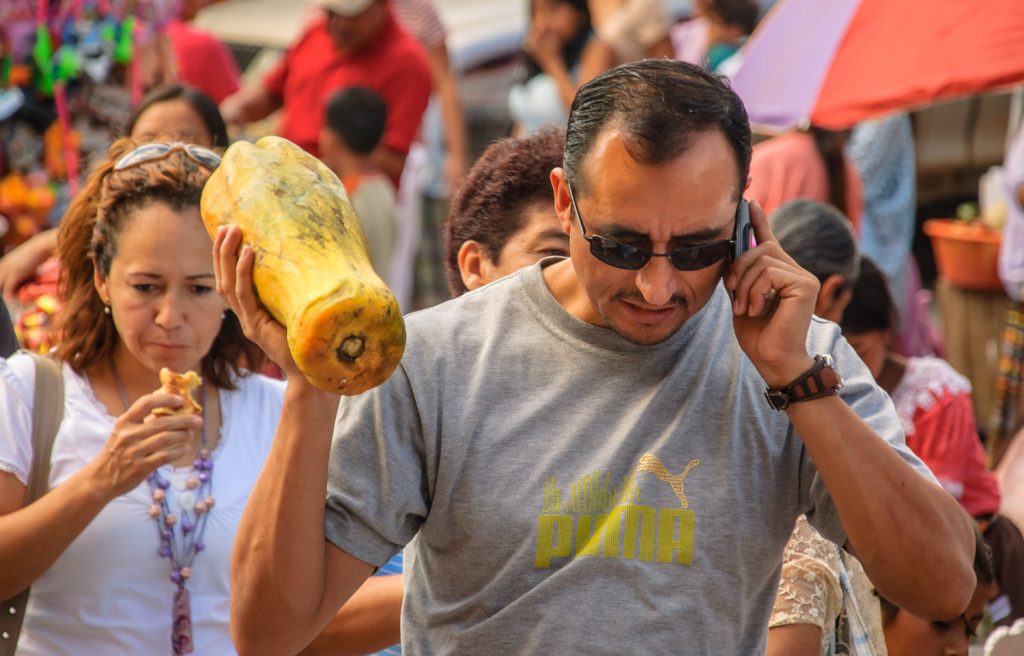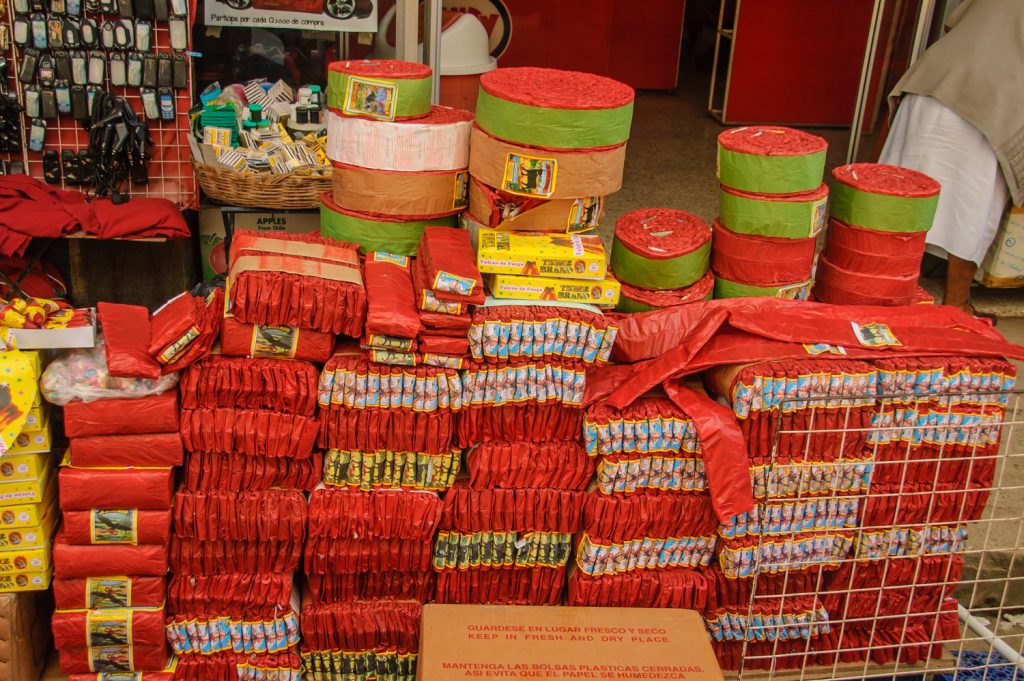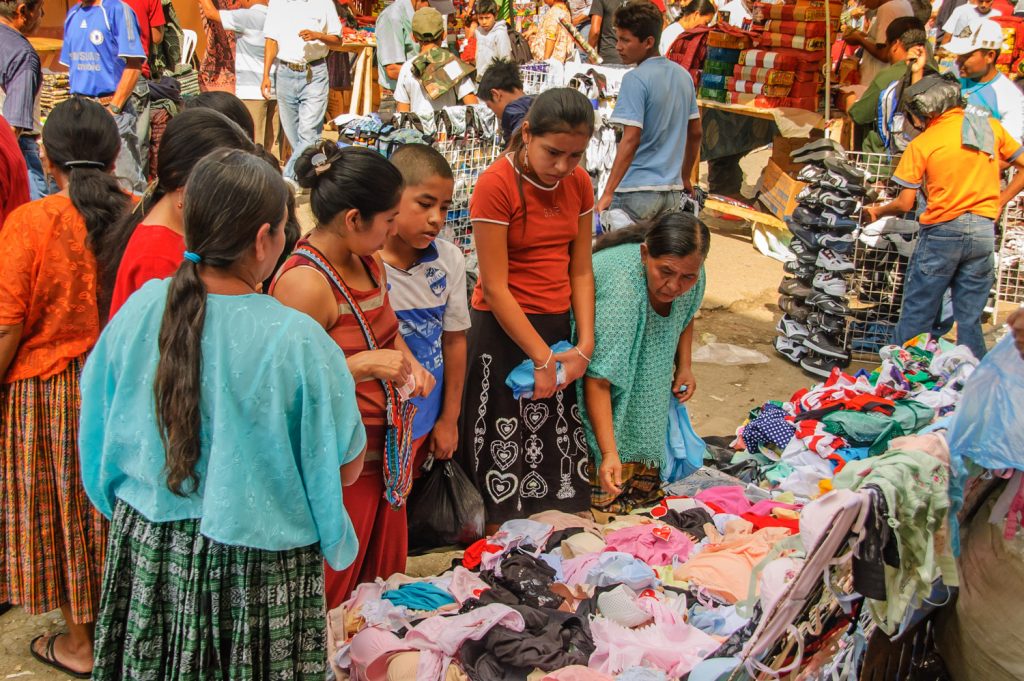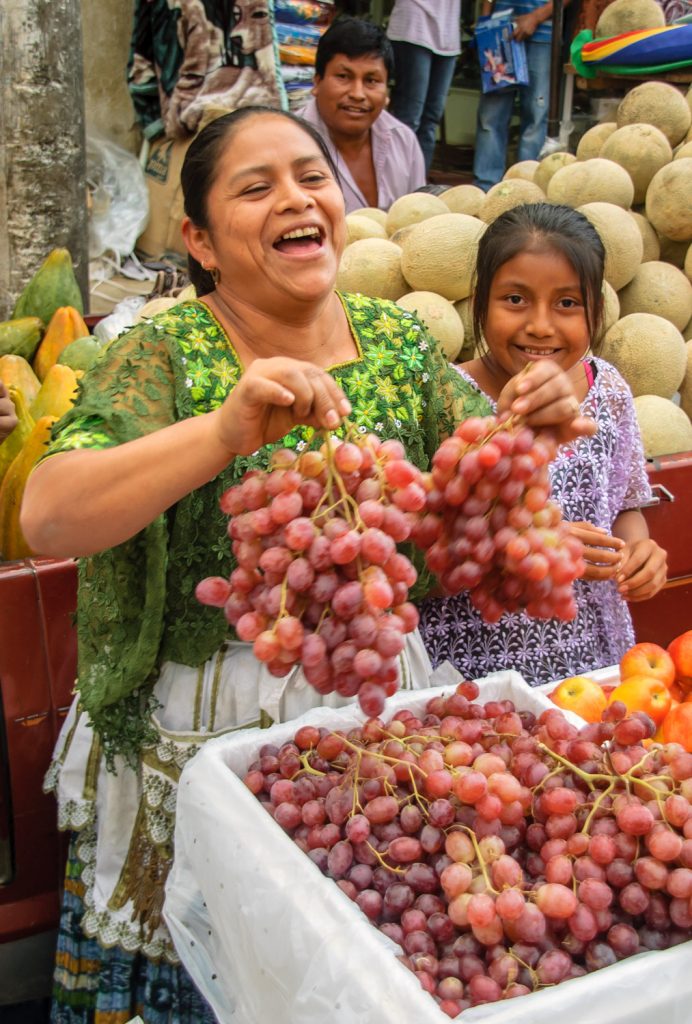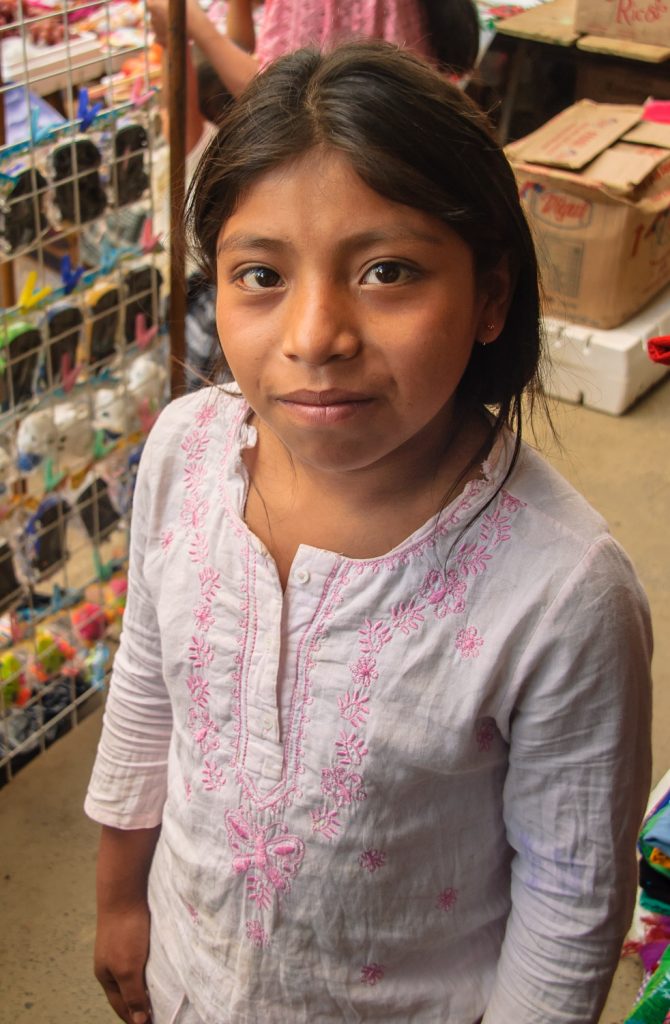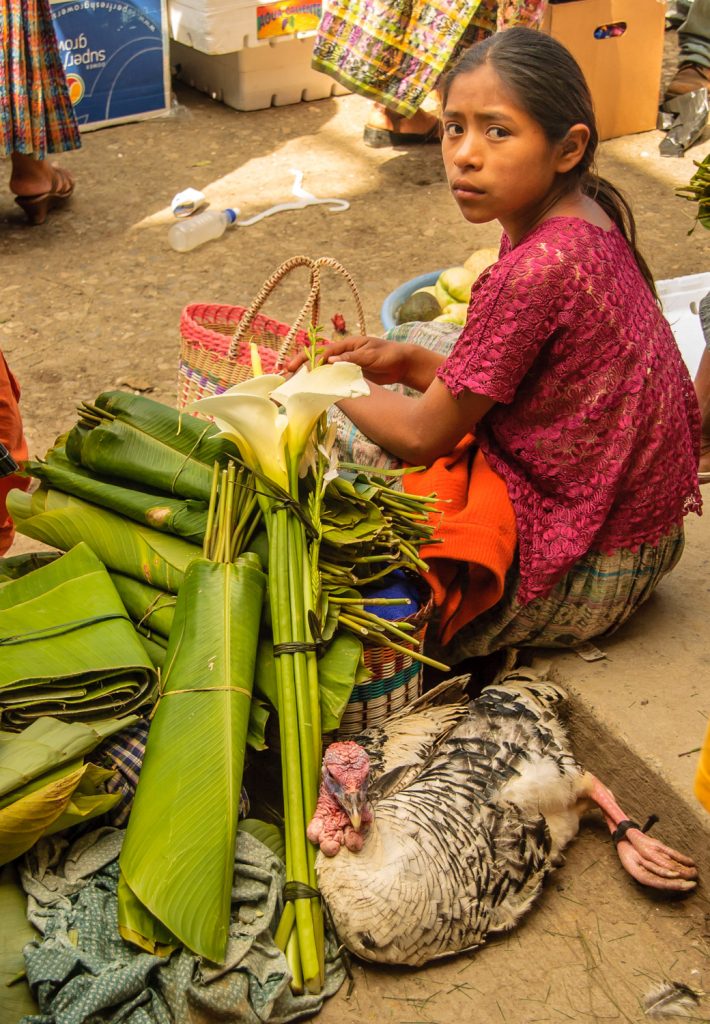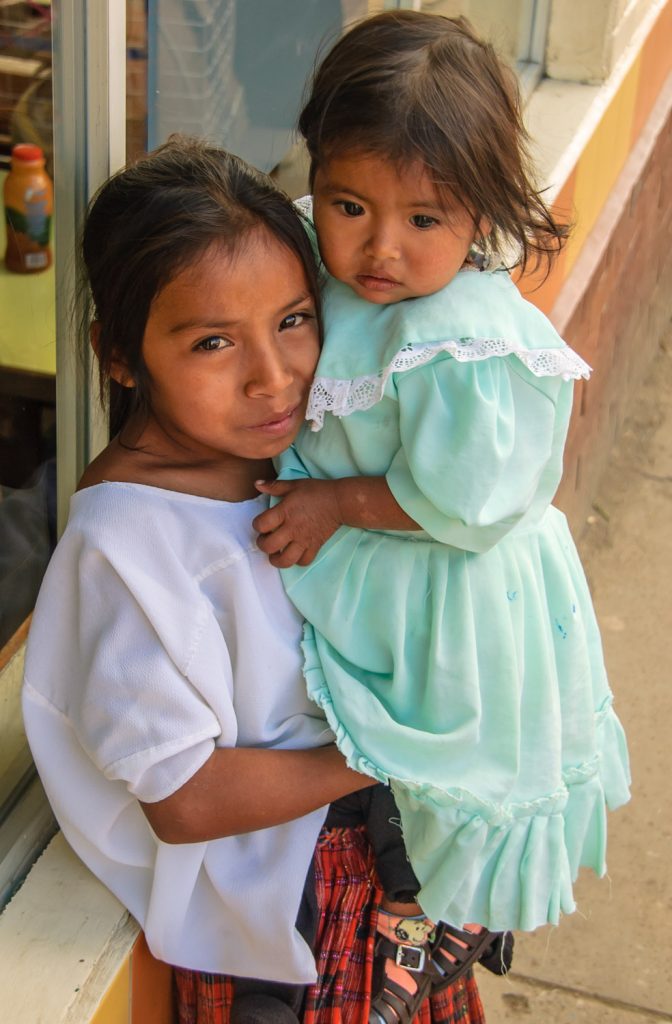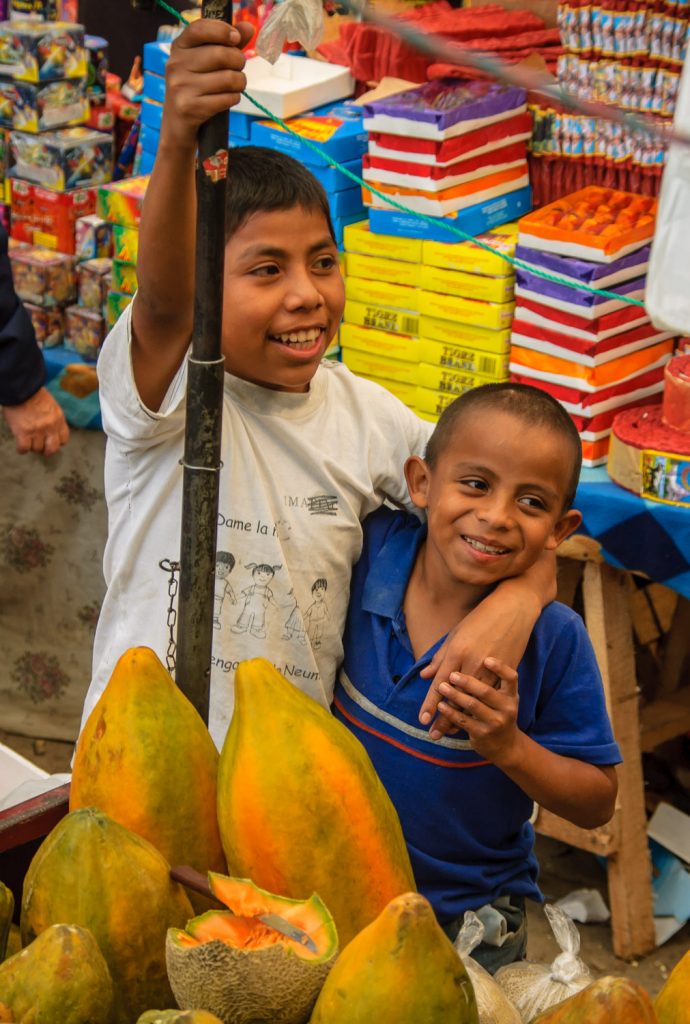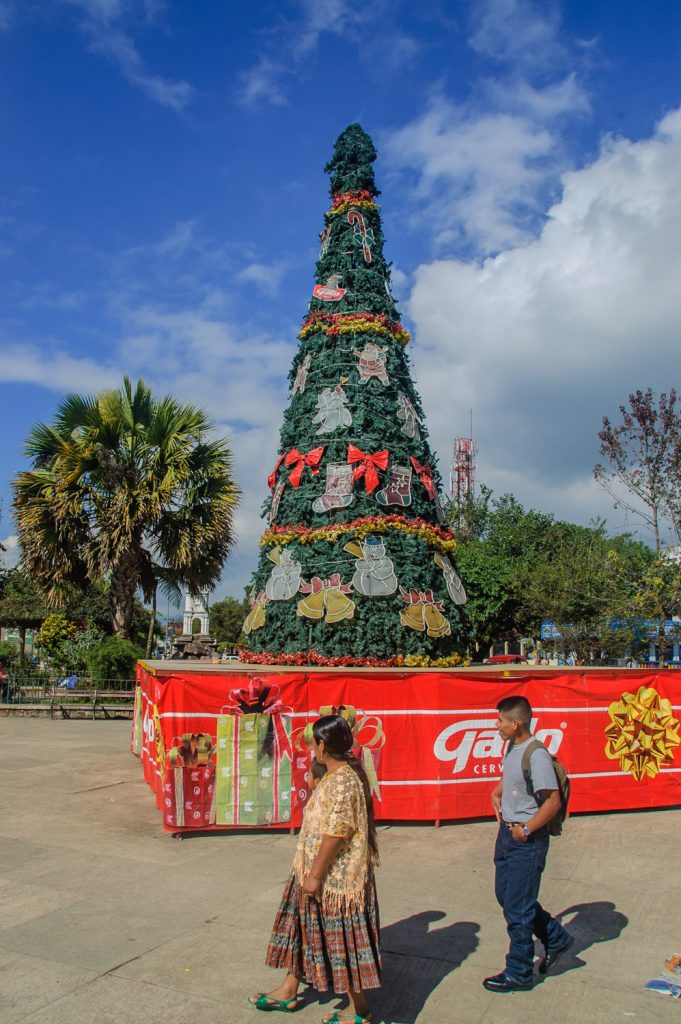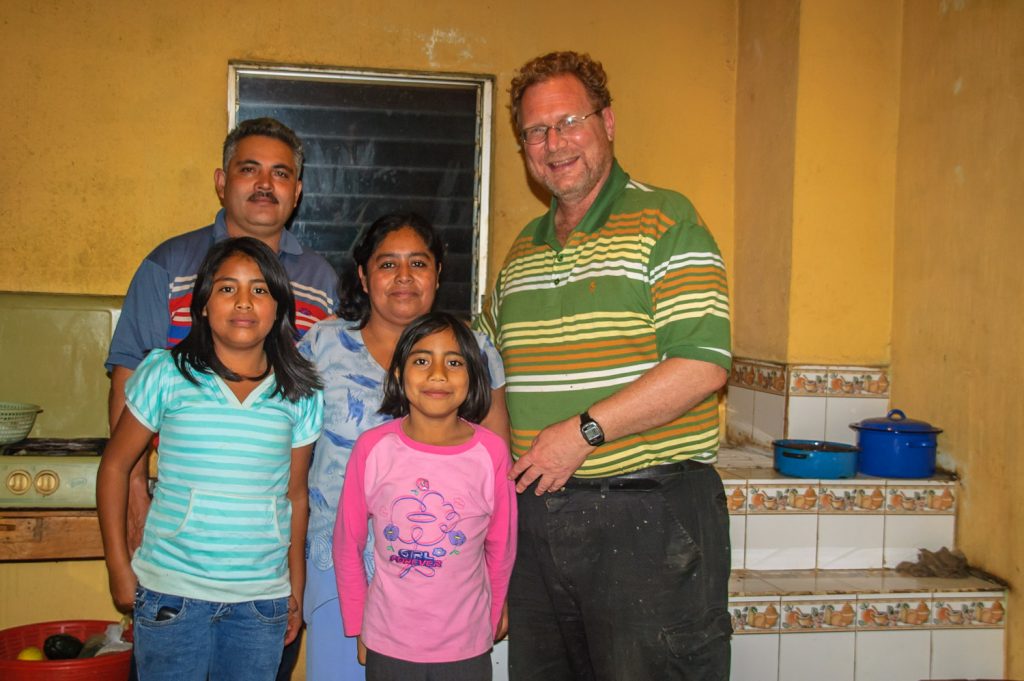
Friday was my last day at the school in Nebaj. Unlike recent previous days, the sun was brilliant and I took my camera to get pictures of the view from the rooftop where the school is located, as well as of my teacher, Pedro.
Several recent days it’s actually been quite chilly even to the point where you can see your breath in the morning, and of course the houses have no heating, so it can be quite cool. That’s because Nebaj is located high up in the mountains.
Once again, the class was a mix of activities – reading, writing, conversation on many topics, and drills of verbs – one to one with Pedro. The added bonus to the experience is that Pedro often talks about local culture, the experience of living through the civil war, and about life in Guatemala in general.
In the afternoon I arranged to take a hike with a guide to a couple of Ixil villages outside of Nebaj. My school package includes a couple of hikes, and because of New Year’s and the bad weather, I hadn’t been able to take advantage of this.
I ended up having two guides, a quiet older man, Jacinto, and a younger and somewhat obnoxious man, Mario, who kept trying to show that he knew words in English and boasting that he had been to the United States.
Nebaj sits in a valley surrounded by mountains, so almost any hike involves a great amount of climbing at first. This hike was no exception, and I was very winded and had to take it slowly, and repeatedly stopped to catch my breath. After a couple hours steady climbing, we at last crested a hill, and descended into the village of Cocop.
This, I learned, was the village Jacinto is from. He led me through the village to a small cemetery. This is, he explained, contained entirely the graves of victims of a 1981 massacre of villagers by the Army. They threw the bodies down a well, and only later were they recovered and given a proper burial. Many of the bodies couldn’t be identified and those graves are marked only with letters and numbers. I asked Jacinto if he knew some of the people buried there, and he indicated that the first two graves were his mother and father. He also lost a number of other family members and relatives in the massacre.
I asked him if he was in the village when it occurred, and he said that he was, and was 13 at the time, and one of the survivors. I can’t imagine the horror of that day. As Pedro had earlier explained to me, many of the Ixil villagers were caught between the army and guerrillas, not wanting to get involved with either. But at that time, during the Cold War, many Ixil were suspected of being communists, and the army massacred entire villages.
Then Jacinto took me to his house, where his wife was cooking on a fire place. Here is where I would get to try boxboles, a local food made of corn flour wrapped in leaves. Often the leaves are guisquil, a kind of squash, but in this case they were leaves of a kind of pepper. It was actually reasonably good, although I tend not to have much of an appetite after exerting myself on the climb. I didn’t like a corn drink they gave me as much.
Afterwards, Jacinto led us out of town on the trail for Rio Azul, the next village, and he returned home leaving me with Mario to continue on to Rio Azul and on to Nebaj. It was downhill all the way, and much easier, through corn fields and pastures, and past houses where calla lilies grew. When the village came into sight, I commented that it wasn’t far. I spoke too soon. Now the trail turned to thick mud, and it was all I could do to avoid slipping on the descents. My shoes and pants were covered in mud.
At last, in Rio Azul, we reached the road and in less than a minute flagged down a pickup truck that let us ride in the back to Nebaj. I always enjoy riding in the back of pickup trucks and watching the world go by and feeling the fresh breeze – one of the pleasures in life which Canadians are denied for safety reasons, but which everyone does in Latin America.
Back in Nebaj, I had my last dinner with the family, and afterwards took pictures of them, and said goodbye to those I wouldn’t see in the morning.
Today, Saturday, I traveled by buses to Panajachel, a town popular with Gringos on the shores of Lake Atitlan, one of the most beautiful places in the world. I’ll write more about that later.
